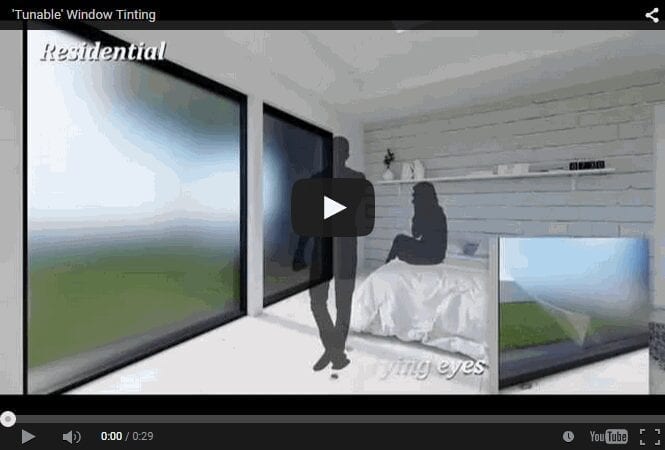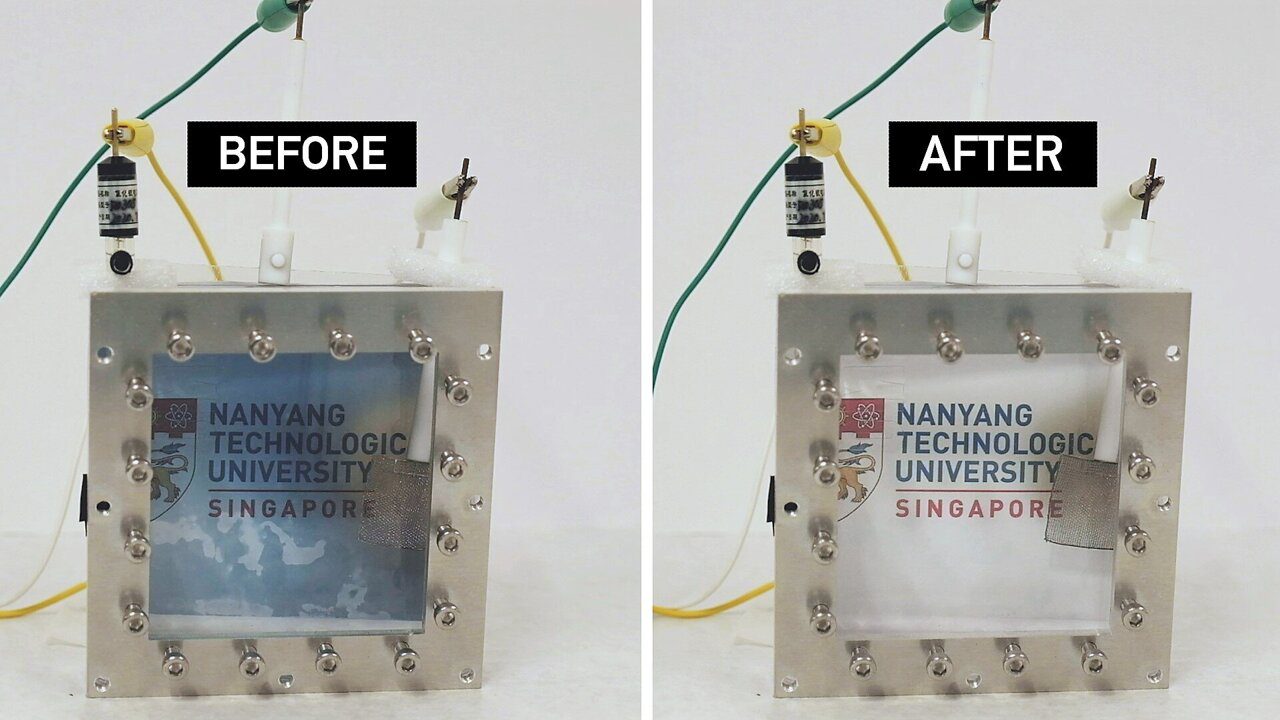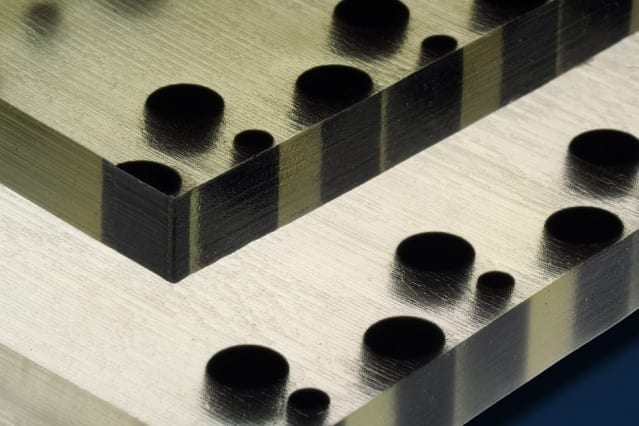
Technology developed by the University of Cincinnati and industry partners can do something that neither blinds nor existing smart windows can do.
This patent-pending research, supported by the National Science Foundation, will lead to low-cost window tintings which dynamically adapt for brightness, color temperatures and opacity (to provide for privacy while allowing light in).
Technology developed by the University of Cincinnati and industry partners can do something that neither blinds nor existing smart windows can do. This patent-pending research, supported by the National Science Foundation, will lead to low-cost window tintings which dynamically adapt for brightness, color temperatures and opacity (to provide for privacy while allowing light in).
- Take some time to see the renderings by UC’s Tim Zarki of what the dynamic, low-cost window tintings will be able to achieve.
A partnership between the University of Cincinnati, Hewlett Packard, and EMD/Merck Research Labs has resulted in a patent-pending breakthrough in ‘tunable’ window tintings. The breakthrough means traditional window shades could soon be replaced by a low-cost tinting where the brightness, color temperature (warm or cool just like incandescent light bulbs) and opacity (privacy) are adjustable by the user.
Importantly, the newly developed device structure that makes these “smart windows” possible is very simple to manufacture, allowing affordability for both business and home use. It can be integrated into new windows or even easily applied to already existing windows, by means of a roll-on coating consisting of a honeycomb of electrodes.
BENEFITS OF THE NEW SMART WINDOWS
Currently, most home and commercial windows use mechanical shades to provide privacy and to block light, heat or cold. This centuries-old technology is already inexpensive and effective, which has slowed the adoption of electronically controlled window tinting, which previously could only mimic the clear-to-opaque performance of mechanical shades. However, this new breakthrough at the University of Cincinnati is about to change that.
The Latest on: Smart windows
[google_news title=”” keyword=”Smart windows” num_posts=”10″ blurb_length=”0″ show_thumb=”left”]
via Google News
The Latest on: Smart windows
- Mask-inspired perovskite smart windows enhance weather resistance and energy efficiencyon April 25, 2024 at 6:36 am
Thermochromic perovskite is a new color switch material used in energy-saving smart windows. Despite its potential for energy savings, thermochromic perovskite suffers from poor weather resistance, ...
- This artist couple build an incredible cabin out of recycled windows for under $500on April 24, 2024 at 6:20 am
Micro homes and sustainable building practices are on the rise. People don’t need big homes or lavish settings. The newer generation is more focused on utility, knowing that through smart design, ...
- The spam came from inside the house: How a smart TV can choke a Windows PCon April 23, 2024 at 3:15 pm
The modern "smart" TV asks a lot of us. In exchange for connecting you to a few streaming services you use, a TV will collect data, show ads, and serve as another vector for bad actors. In a few ...
- Meta Smart Glasses just got the AI upgrade I’ve been waiting foron April 23, 2024 at 12:33 pm
Meta keeps making its Ray-Ban Smart Glasses better, with more styles, multimodal AI that can see, and the option to share your view with friends.
- Sonos overhauls iOS controller app to simplify smart speaker streamingon April 23, 2024 at 7:16 am
Sonos is updating its mobile app, providing iPhone users with a simpler design to make streaming services through its smart speakers even easier.
- How potatoes, corn and beans led to breakthrough in smart windows technologyon April 23, 2024 at 7:10 am
Smart windows are an exciting technology, capable of blocking out or letting in more light as needed, potentially reducing energy costs of large buildings by making them more efficient. This ...
- 7 smart home tips to help you save energy and reduce wasteon April 23, 2024 at 4:32 am
As with almost all smart home devices, smart thermostats grant you the ability to remotely control your home, helping you reduce wasted energy by up to 8% according to energy-saving standards firm ...
- Boost your PC’s performance with Windows 11 Pro, now under $30on April 23, 2024 at 3:22 am
Update your PC's performance when you get lifetime access to Windows 11 Pro for just $29.97 through April 30 at 11:59 PM Pacific.
- Is your PC having trouble? Your smart TV might be to blameon April 22, 2024 at 3:15 pm
It turns out your TV can actually mess up your computer — at least if you’re using a Hisense TV and Windows. Priscilla Snow, a sound designer and composer for games, wrote on Cohost that they’d been ...
- Smart Windows Market The Unexplored Realm Revolutionizing Deep Understanding through Observational Researchon April 21, 2024 at 5:10 pm
Report Ocean recently added a research report on “Smart Windows Market”. The report includes an extensive analysis of the market’s characteristics, COVID-19 impact, size and ...
via Bing News











